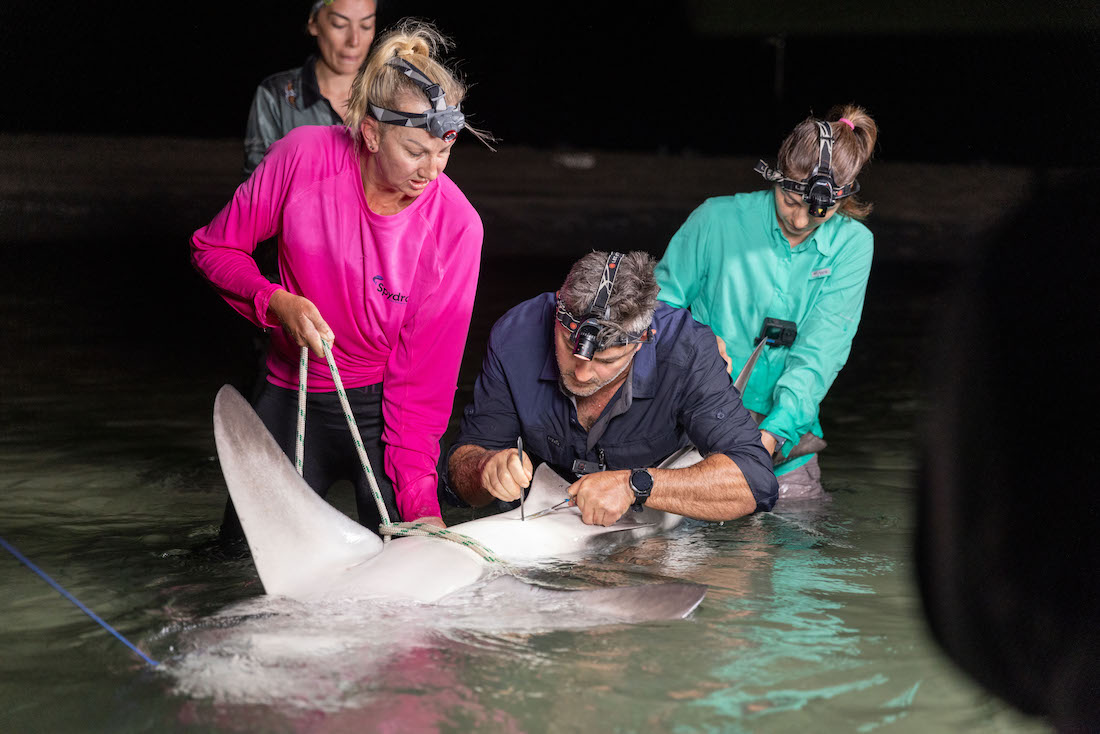PROJECTS
Understanding bull shark ecology for improved shark control and education.
Significant gaps in knowledge remain for human-shark interaction risk in nearshore environments, with climate change adding complexity to this risk.
This project aims to track bull sharks in the waterways of the Noosa and Sunshine Coast Biosphere Reserves with acoustic tags to correlate movements with environmental data to explain fluctuations in abundance off Southeast Queensland, an ocean warming hotspot.
Complementary genomics analyses will identify natal philopatry and kinship, population parameters crucial to understanding dynamic habitat use.
Funding of this Bull Shark Research Project was identified as one of the outcomes in the Noosa Marine Symposium and will facilitate improved shark education and technological mitigation initiatives. It will address many of the high priority research areas currently outlined in the Queensland Shark Control Program Research Strategy (2019).
The Project significantly compliments the Blue Biosphere Project, which is focused on understanding how iconic marine species use the Noosa Biosphere Reserve marine area.
This Project brings together a diverse industry collaboration to advance conservation outcomes for these apex predators in the UNESCO Biosphere Reserves of the Sunshine Coast region.
Understanding the biodiversity, sustainable use, human-shark interaction, and climate adaptation potential of bull sharks in the region aligns with UNESCO Man and the Biosphere Strategic Objectives 1, 3 and 4.
Outcomes
The aims of this interdisciplinary project are to:
- Monitor fine-scale horizontal and vertical movements of juvenile and adult bull sharks using acoustic telemetry deployed across four neighbouring riverine ecosystems in southeast Queensland, including manmade artificial water bodies.
- Collect and correlate environmental data (i.e., rainfall, salinity, temperature, etc.) with tracking data to identify preferred habitats by shark size and sex.
- Assess bull shark movements in relation to existing shark control gear in nearshore environments, including interpretation of catch per unit effort (CPUE) patterns of occurrence in areas frequented by human beachgoers, to assess the efficacy of the Queensland Shark Control Program (QSCP).
- Determine natal philopatry through novel kinship analyses, to determine female return to specific rivers each reproductive season, exploring the relatedness of individuals captured in each river.
- Enhance the empirical data available to develop sound risk-based bull shark management strategies and promote trials of new non-lethal gear in southeast Queensland (SEQ).
Timeline
This project commenced in July 2023 and is due for completion in December 2025.
Reports
Nil to date
Proponent
UniSC (University of the Sunshine Coast)
Project Partners
UniSC, Griffith University, Noosa Biosphere Reserve Foundation, Queensland Department of Agriculture & Fisheries, Sunshine Coast Council, SeaLife
Project Value
In the media
13 March 2023: Little is known about Bull Sharks in region’s waterways but that’s about to change
10 November 2023: Three-year project could help un-muddy the waters surrounding Bull Sharks
10 November 2023: Can Bull Sharks and humans safely co-exist?
17 November 2023: New research on Bull Shark activity in Noosa
19 November 2023: Scientists count Bull Sharks living in Sunshine Coast waterways in three-year project

